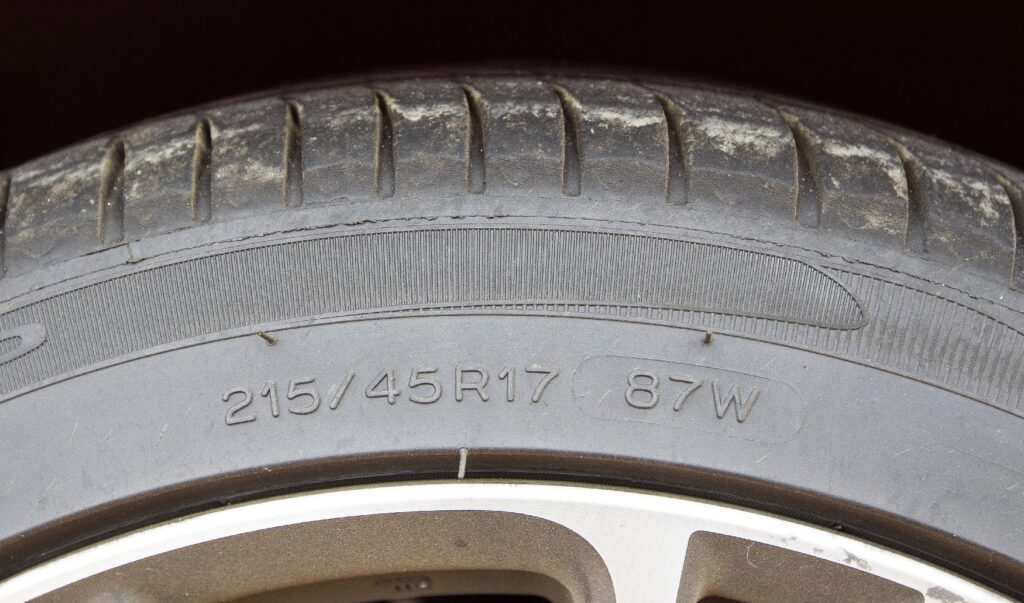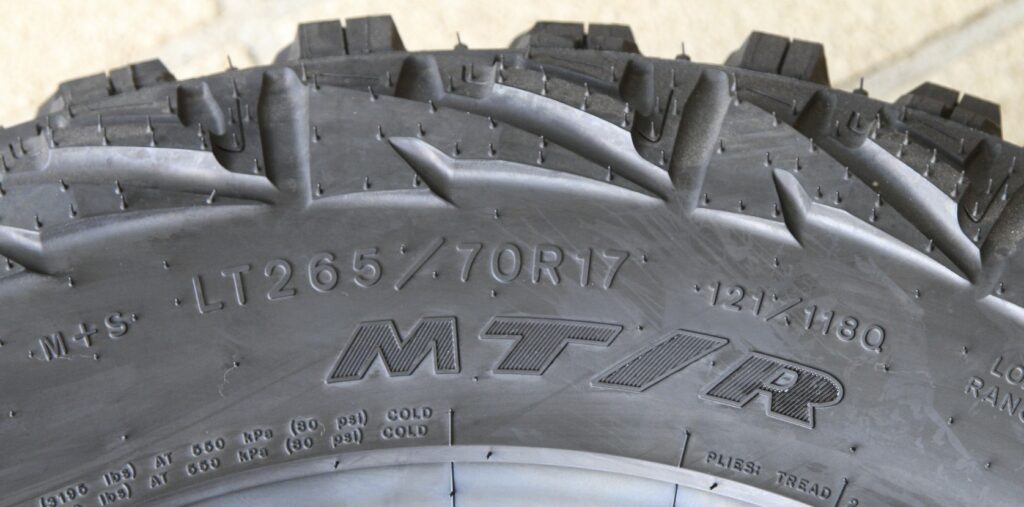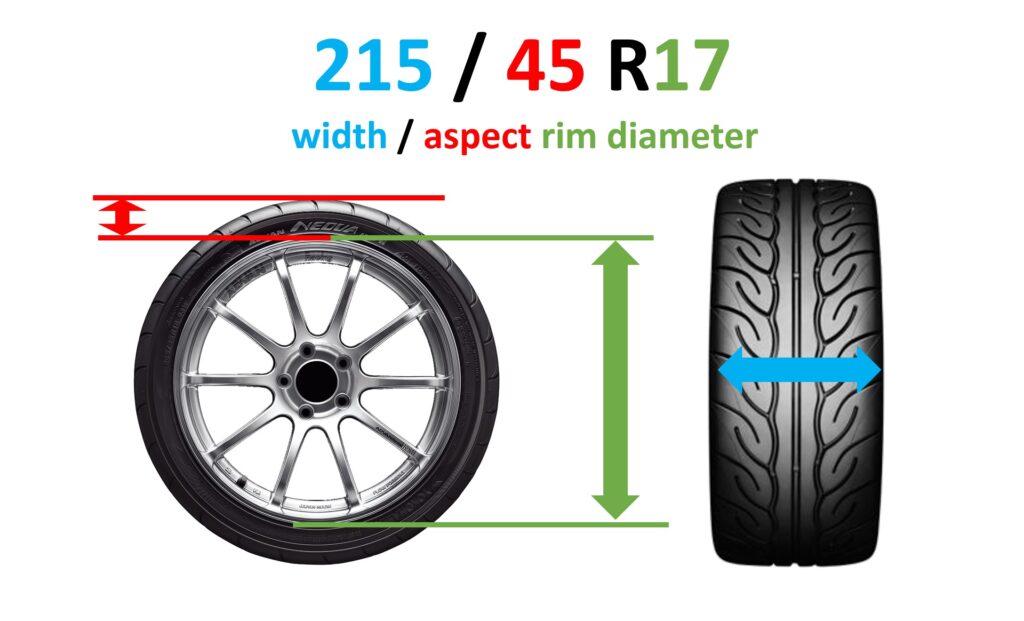Need help understanding sizing like 215/35/17 or 33×10.5×16? Read this…
The easiest way to buy new tyres is just to drop your car at a shop and tell them “new tyres, please”.
But that’s not necessarily going to get you the best tyre for your needs, whether you’re a 4X4 tourer, tower or racetrack lover.
Very often people wish to change their tyre’s dimensions; 4X4 owners often want taller tyres for better offroad performance, and sports car owners often want wider tyres for looks and corner grip, or bigger brakes are being fitted..there’s many, many reasons to change your tyre size, but first you need to understand how sizing works.
The Tyre Size Calculator helps you compare your existing vs new tyres by giving you some comparison measurements and advice.
A tyre’s size is found on the sidewall of the tyre, and it looks like this:

The numbers you’re looking at for size in the picture above are 215/45/R17. The 87W is the load and speed rating, and that’s important but not relevant to sizing. The “R” stand for Radial, a type of tyre construction, again not relevant to sizing.
And here’s a 4X4 example, 265/70/17:

So what do those numbers mean? Let’s take a look at that 215/45R17 tyre:

The first number, 215, is the tread width in millimetres. The second number, 45, is a percentage. It refers to the aspect ratio, or sidewall height. So to find the sidewall height we multiply 215 * 45% = 97mm. Confusing, but that’s the way it is.
Finally, the 17 is the rim diameter. And that’s in inches! There’s 25.4mm to an inch, so to convert 17inches to mm = 17 x 25.4 = 431mm.
To find the overall diameter of the tyre it’s two sidewalls of 97mm each, and the 431mm rim so: (97mm x 2 = 194mm) + 431mm = 625mm. And, often tyre diameters are referred to in inches…so we convert to inches – 625mm / 25.4 = 24.6 so we’d call that a 25 inch tyre.
Yes, a lot of mixing and matching of units there, but that’s just the way tyres are. Watch this video where I explain all the above and more, including the imperial tyre measurement system:
